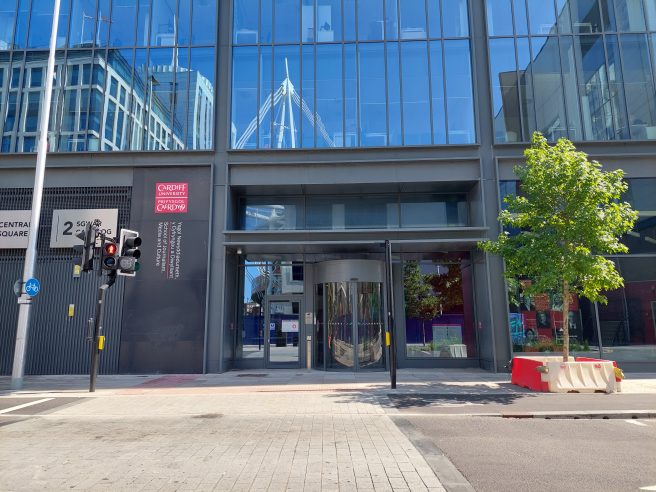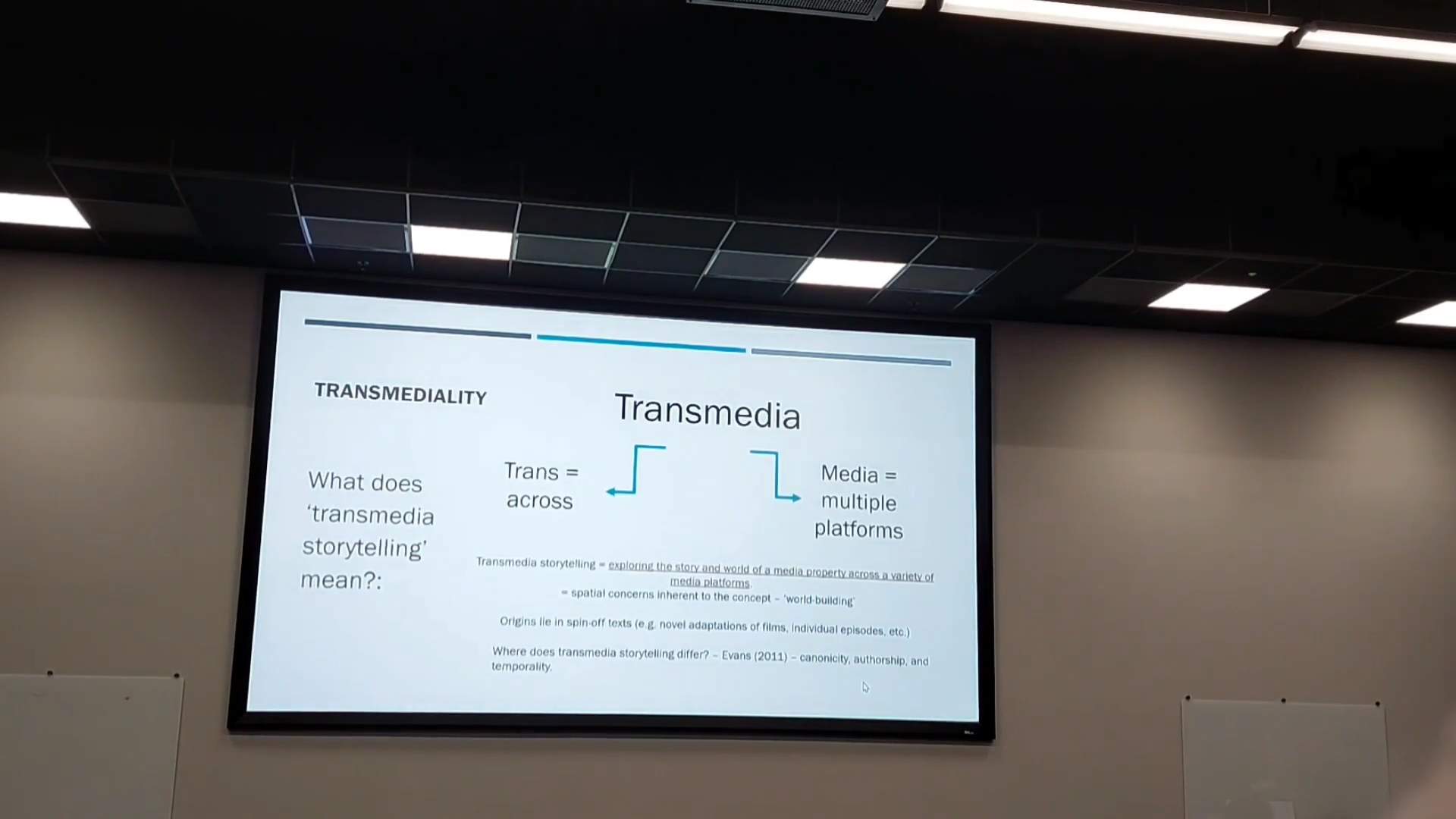Why choose Media and Communications at Cardiff University
12 July 2023
As someone who is graduating soon and has been involved with several Open Days, I can say that I loved studying Media and Communications at Cardiff.
Choosing a course can be tricky, and it is not always an easy decision. If you are thinking about applying to study Media and Communications, and cannot visit the School of Journalism, Media, and Culture (JOMEC), this article will give you an insight into the course and Academic School.
Modern building
The JOMEC building is located in the city centre, right next to BBC Cymru Wales, and in front of Cardiff Central train station. It was first opened in 2018 and is one of the newest university buildings in Cardiff. This also makes it very modern, with state-of-the-art lecture and seminar rooms.
An additional advantage is that there is a library on the first floor of the building, as well as several study spaces, so you do not have to travel far to get those facilities. It also has an area called the social stairs, where you can take a break between classes. There is even a silent study space area under the stairs not many students know about!

Few lectures
Lectures, if you did not know, are two hours long courses based on one subject, and are held in a lecture theatre. Usually, lecturers present a topic before the class while the students take notes. Group size will depend on how many people are enrolled in the course, and each class may have a different number of students.
In an academic year, there are two semesters, the autumn and spring one. For Media and Communications, you will have three courses per semester, making only six courses in an academic year.
An important aspect to mention is that it is primarily a theoretical course. However, it has some practical elements through assignments such as individual or group projects. Although you will not be studying in studios and newsrooms, you will still gain knowledge based on different topics.

Interactive seminars
Each lecture will get its own seminar. These are shorter sessions, lasting around 45 minutes. Seminars are more interactive than lectures because the groups are much smaller.
This is when you will discuss different aspects of the lecture topic and bring in readings or any other ideas you have. It is a chance for you to express your views and discuss them with your seminar leader and your class.
Fun courses
Your first year is more of an introduction to media studies, when every student does the same six core modules. This is so that every student, even those who have never studied media before, can gain an understanding of the field.
Then, in your second and third years, you will have more freedom to choose from a wide range of optional modules. Because the first year is broader, it will briefly touch upon different topics available in the next two years so that you will get short introductions to future options. For example, in our first year we had a guest lecture about music, and then, in my final year I did a course on Popular Music, Media and Culture.

Engaging topics
An amazing aspect about the course is that topics are varied. You can choose to study more practical courses, such as Marketing, Branding and Promotional Cultures in Television and Immersive Media, or theory-based ones like Film and Cultural Theory.
Media and Communications offers you a broad range of subjects. It is made in such a way that you can choose a more specific path (film-based, for example), or, if you are unsure what you want to do in the future, you can explore multiple topics.
There were times when I found the topics so entertaining and up to date, that it did not feel like I was studying an academic course.
Diverse assignments
Most of the university work you will complete during your three years is essay-based. However, each module has its own form(s) of assessment, so it will depend on the courses you will be taking.
In some cases, you will choose your essay question based on a topic you studied, while for others, you will be given a few options to select from.
Another form of assessment is through projects. These could be individual, like the one you will get for the core module Digital Culture, or group ones, for courses such as Branding and Identity or Screening Locations.

Friendly lecturers
After three years, I can say that one of the best aspects of JOMEC is its lecturers. They are always willing to help with questions about assignments, courses, or anything else.
Thinking about approaching them might seem intimidating at first. Believe me when I say that all past and present students have been there. However, lecturers are friendly and excited to talk to you. Every time I needed help approaching an essay topic, I found going to their office hours really useful.
Overall, I enjoyed my time studying Media and Communications, and I would recommend it to anyone who wants to find out more about this field!